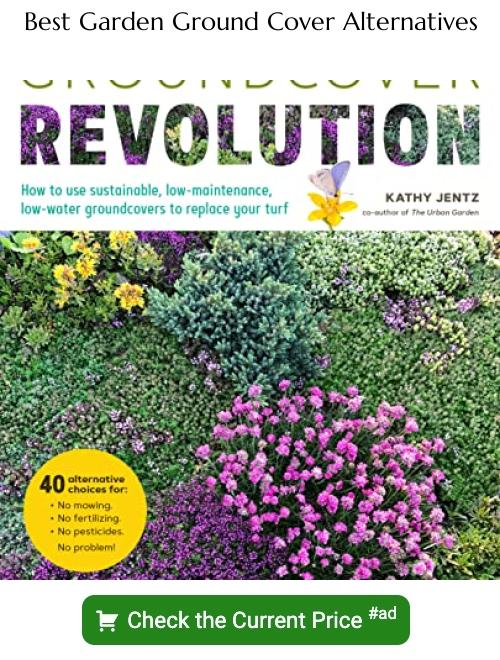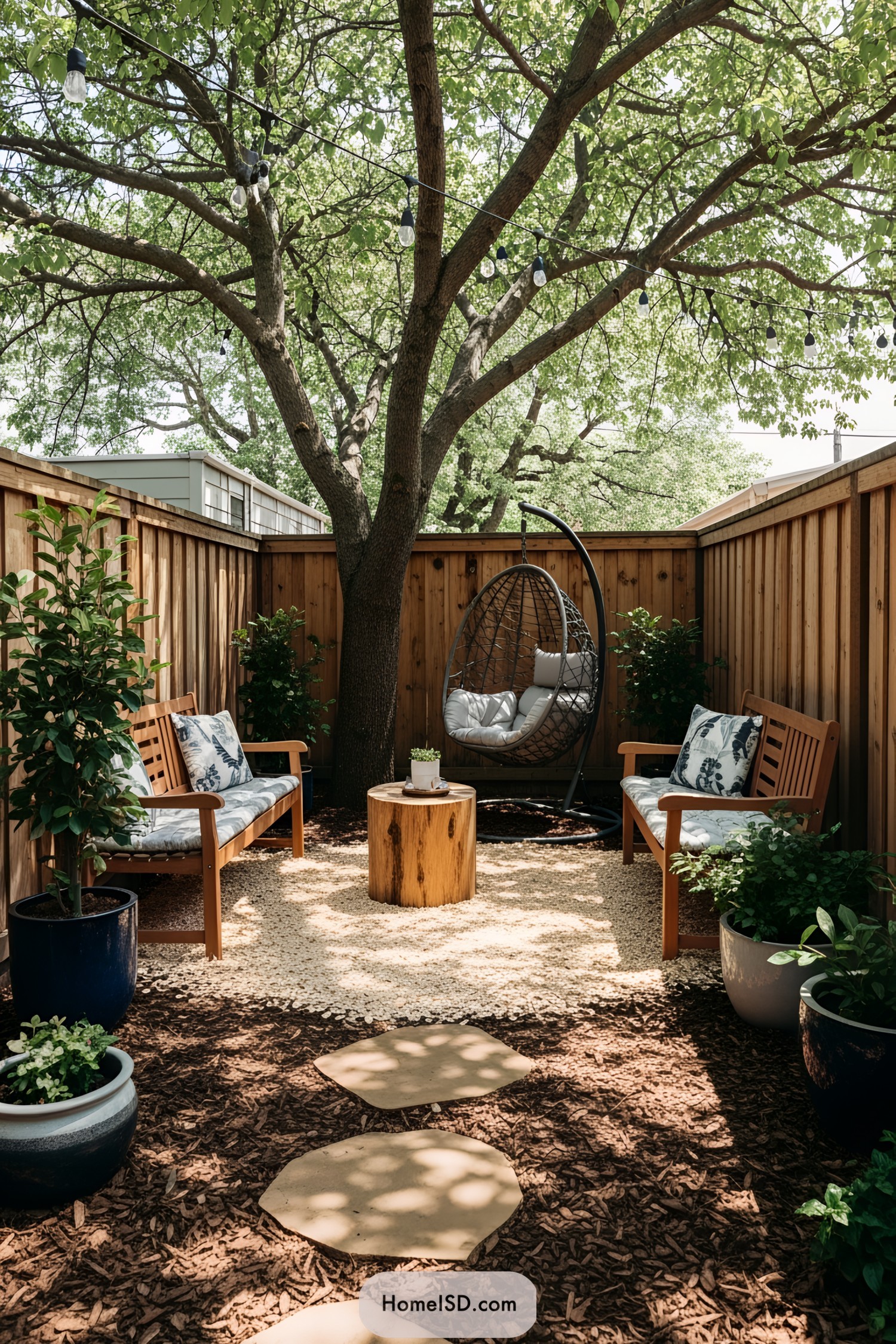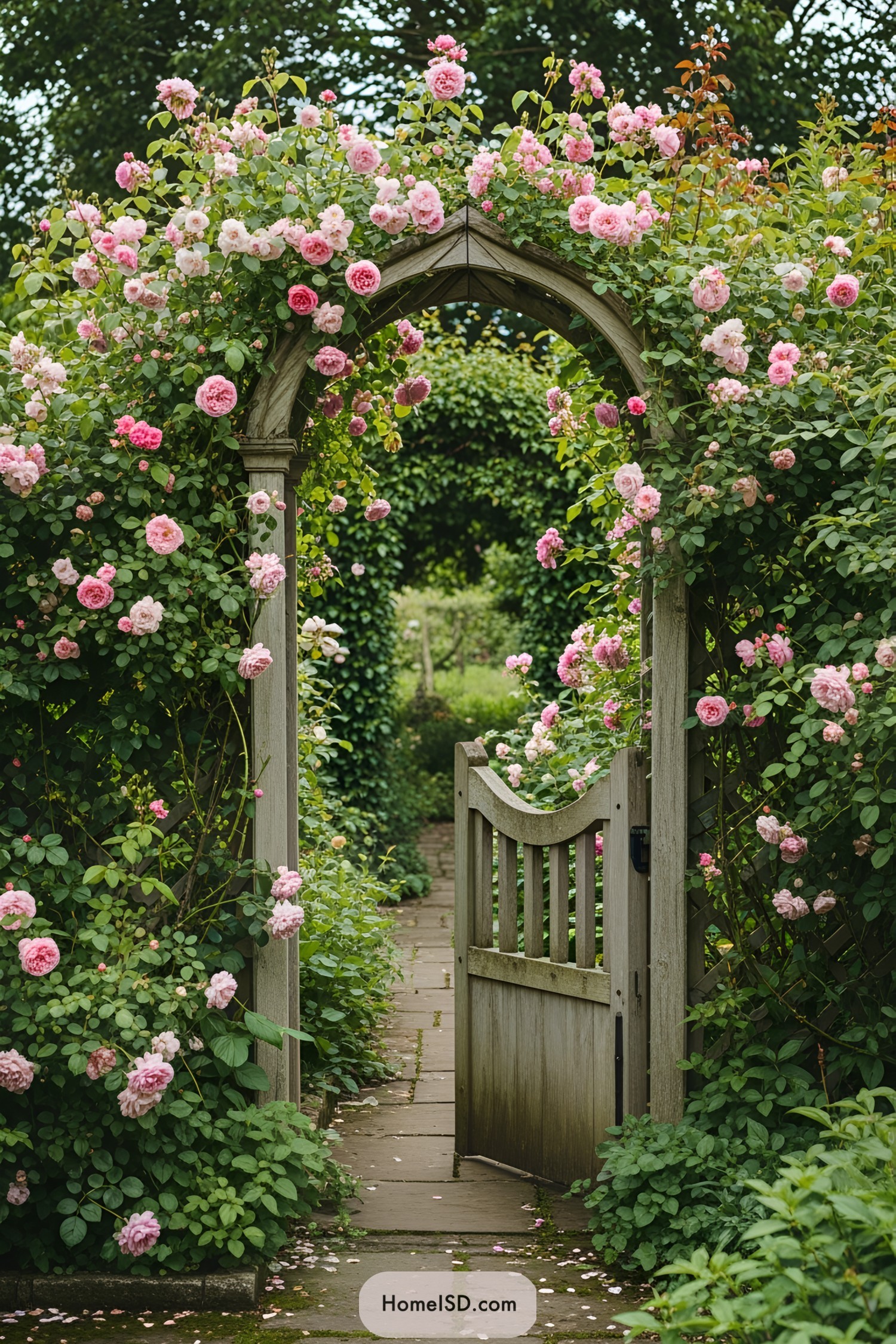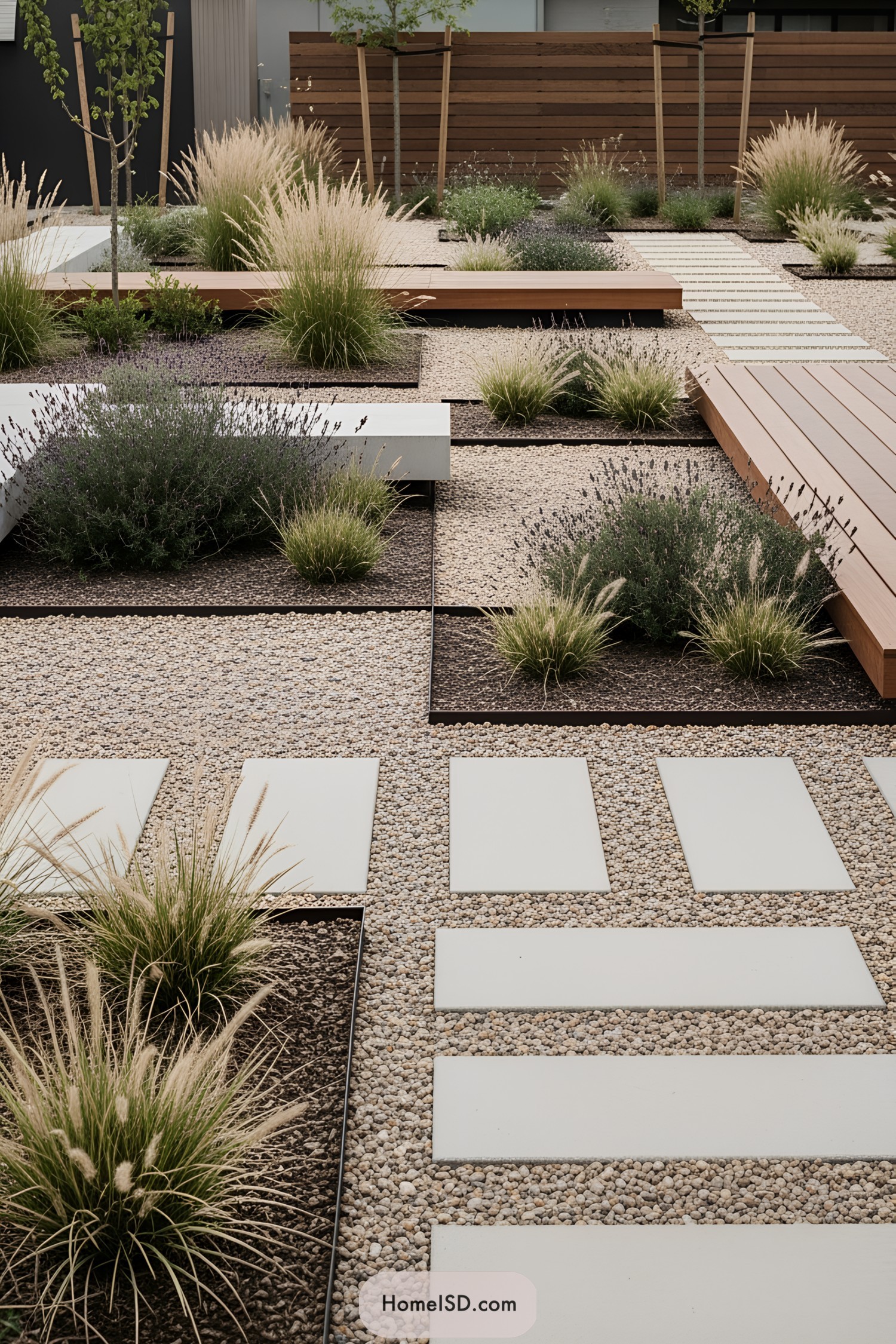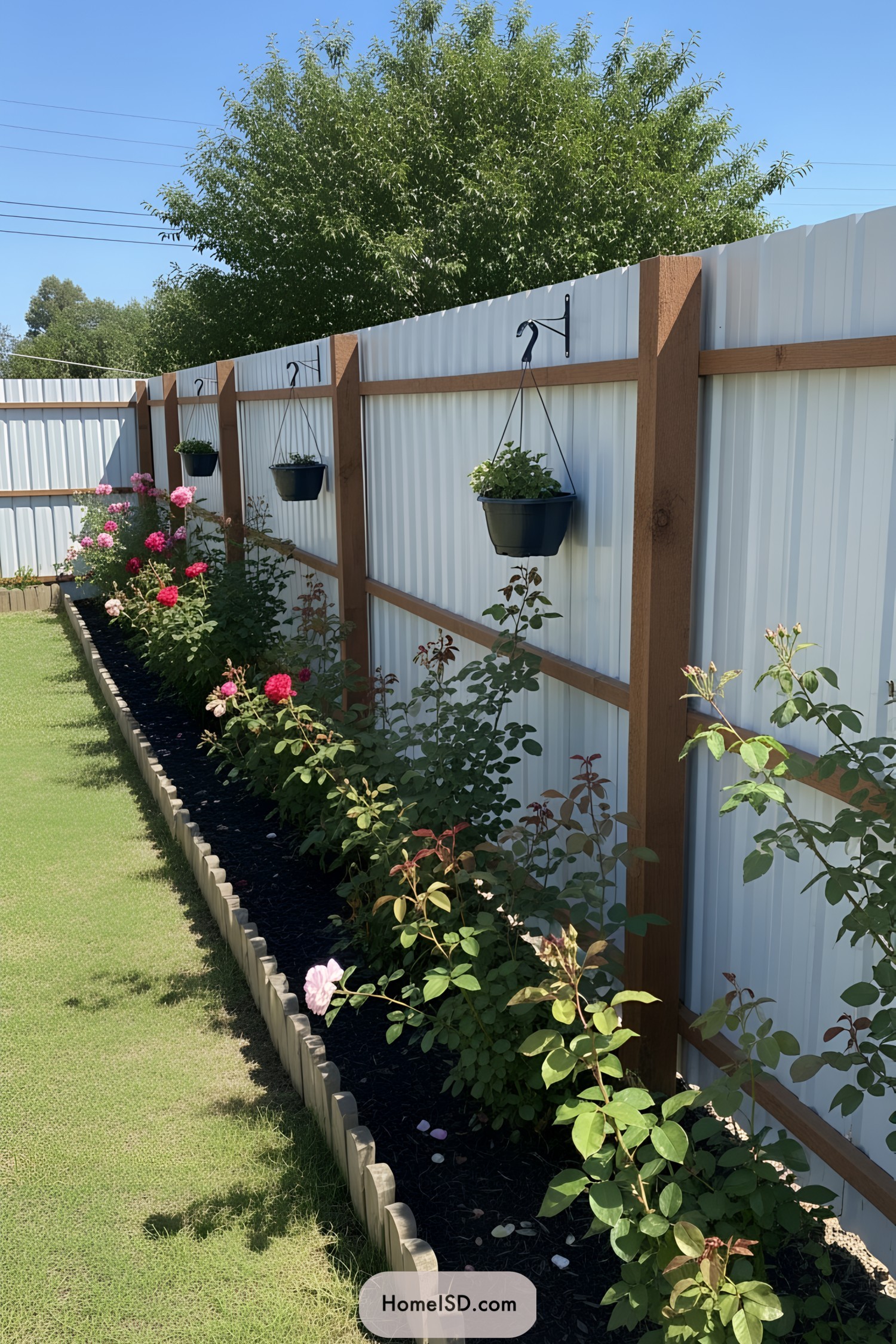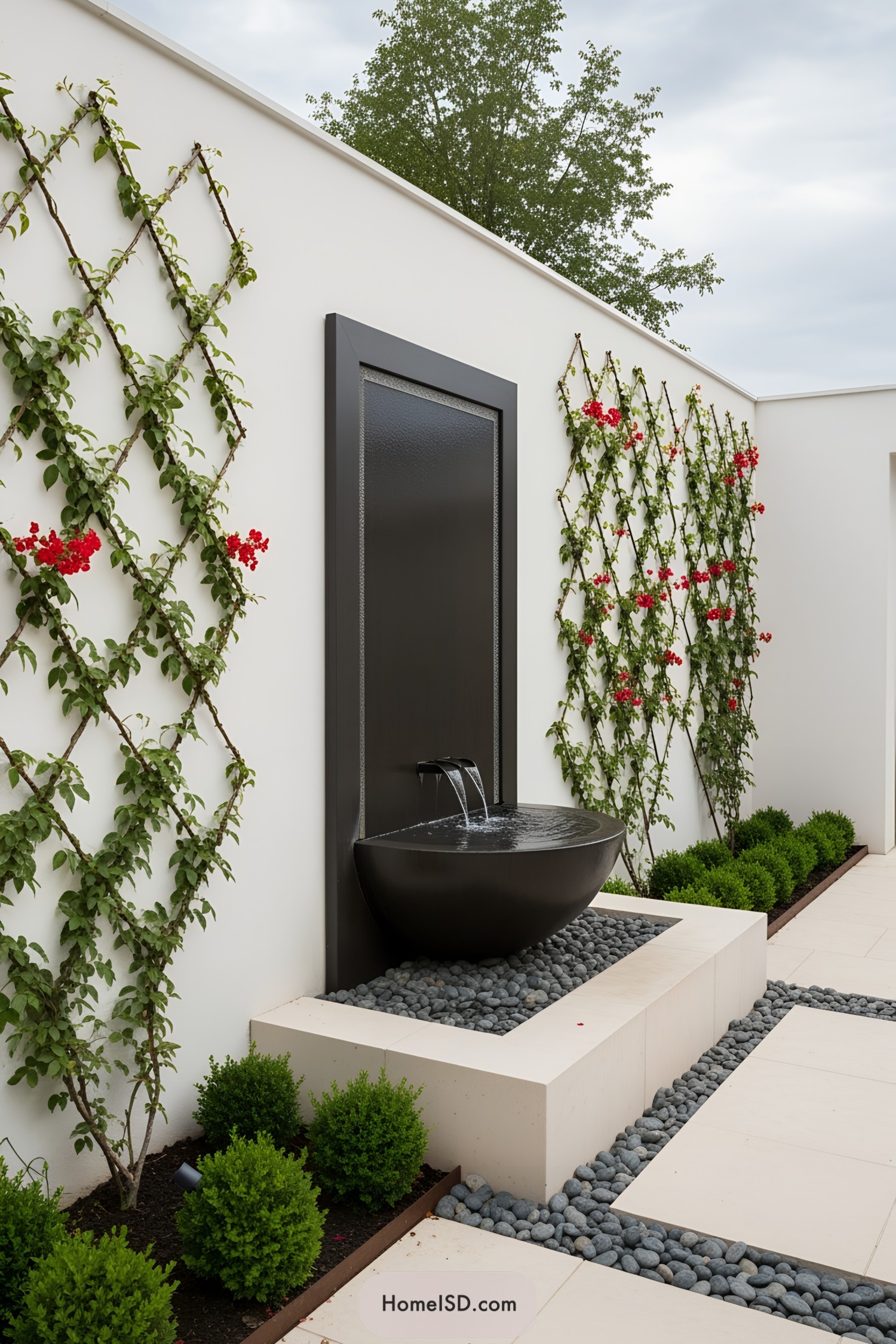Last updated on
Reimagining your garden is one step away because this article unveils effective alternatives to mulch you probably didn’t know about.
Key takeaways:
- Rock Mulch: Durable, moisture retention, low maintenance, aesthetic options.
- Rubber Mulch: Eco-friendly, longevity, shock absorbent for playgrounds.
- Leaves: Shred fallen leaves for insulation and soil fertility.
- Grass Clippings: Quick decomposition, nitrogen-rich for plant growth.
- Pine Needles: Acid-loving plants, weed barrier, slow decomposition.
Alternative Mulch Types
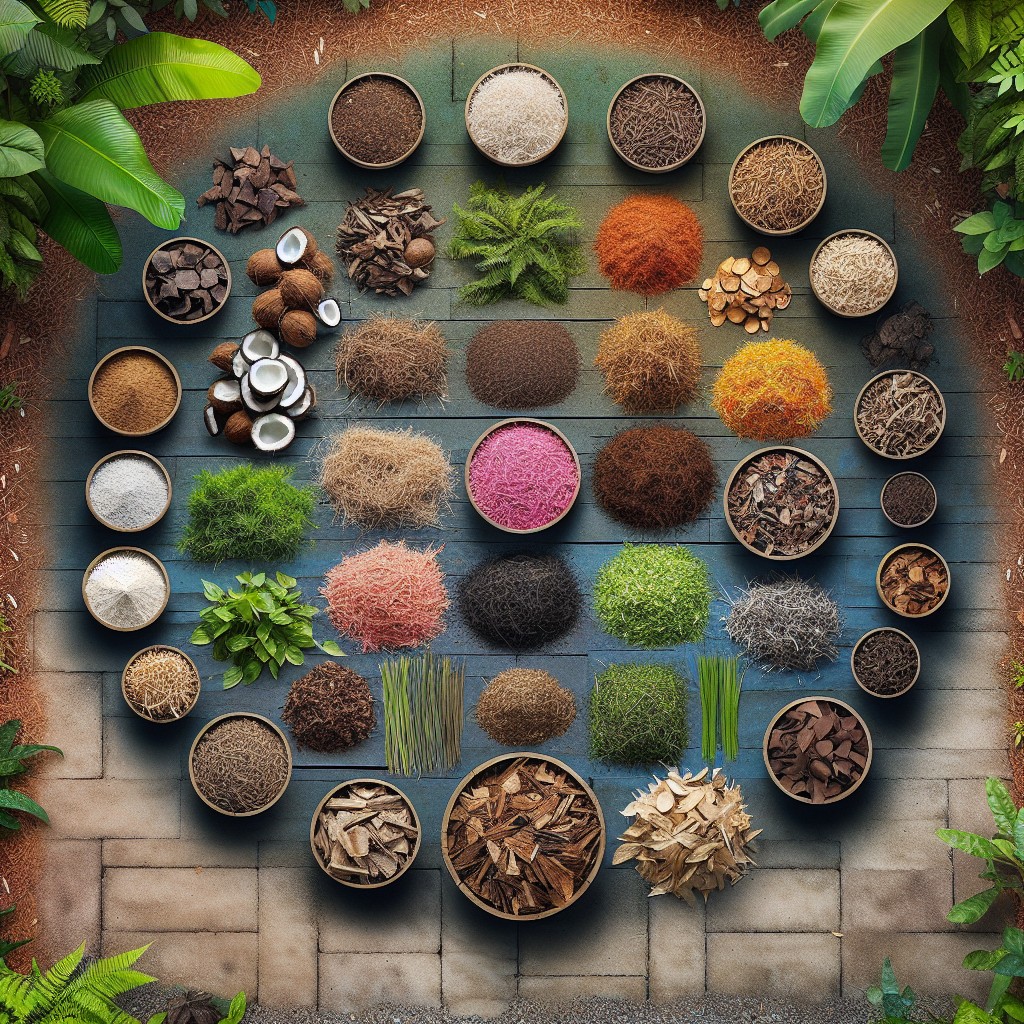
When considering a departure from traditional wood mulch, the possibilities are both aesthetic and practical. Here’s a quick glance at some worthy contenders:
- Rock Mulch: This durable option can range from pea gravel to larger river rocks. The benefits include retention of moisture, minimal maintenance, and a full spectrum of natural stone colors that embellish your garden’s aesthetic.
- Rubber Mulch: Made from recycled tires, it’s an eco-friendly choice that offers longevity and is available in various colors. Its shock-absorbent nature is ideal for playgrounds.
- Leaves: Readily available, especially in autumn, fallen leaves can be shredded and spread over garden beds. They insulate soil and, as they decompose, enhance soil fertility.
- Grass Clippings: After mowing your lawn, repurpose the clippings as mulch. They break down quickly, providing nitrogen to the soil—a boon for plant growth.
- Pine Needles: Acid-loving plants will thrive with a blanket of pine needles. They interlock to form a barrier against weeds and are relatively slow to decompose.
- Cardboard and Newspaper: Layers of cardboard or newspaper offer a biodegradable weed barrier that eventually enriches soil structure. Just ensure they are anchored down to resist wind.
Each alternative serves a unique set of soil requirements and visual preferences, proving that mulch can be both functionally diverse and creatively satisfying.
Rock Mulch
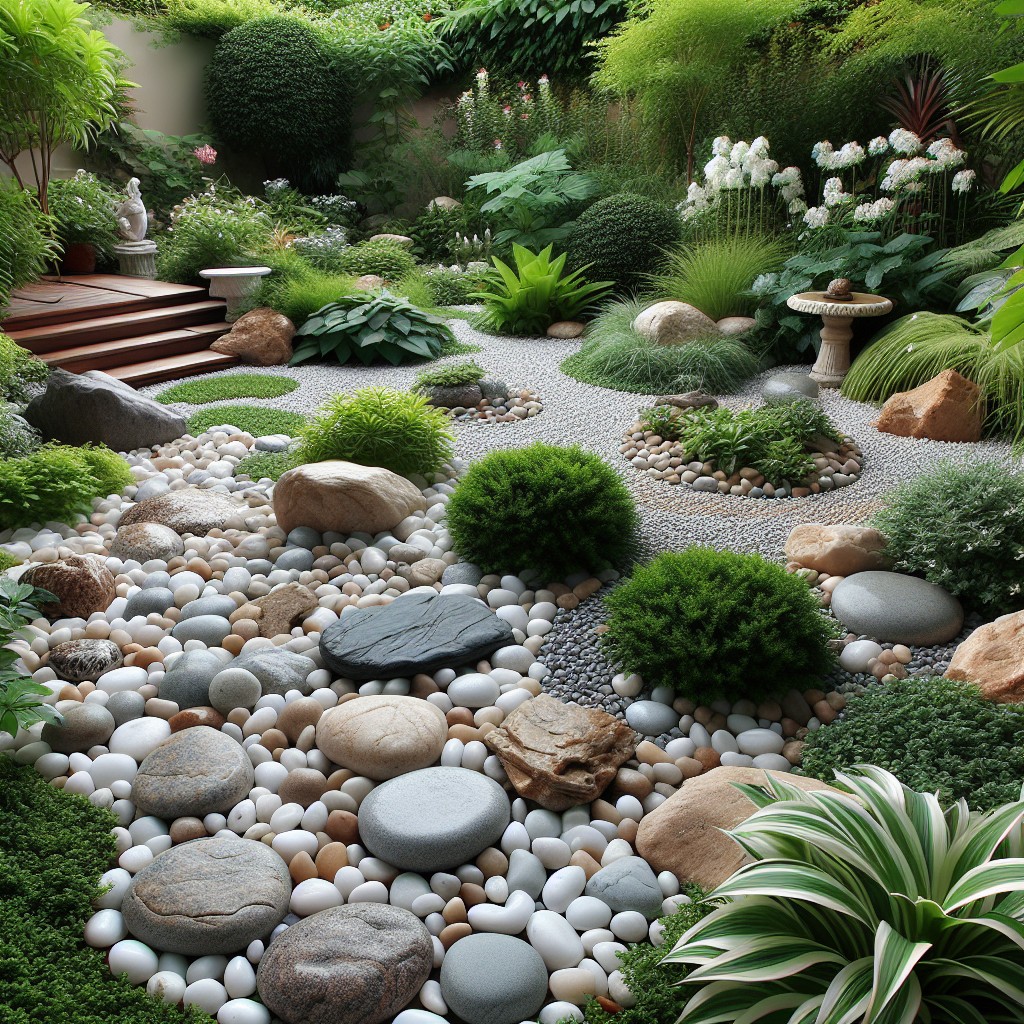
Utilizing rocks as a mulch alternative offers an array of benefits, significantly enhancing the aesthetics and efficiency of a garden space. The durability of stones ensures a long-lasting solution that doesn’t decompose, reducing the need for frequent replenishment. This can effectively suppress weeds while providing excellent drainage, keeping plant roots healthy and well aerated.
When selecting rock mulch, consider the size and color to match your garden’s design. Pea gravel, river rocks, and lava rocks are among the popular choices that cater to different visual preferences and functional needs. Moreover, the reflective property of light-colored rocks can help keep the soil cooler by deflecting sunlight.
In terms of installation, it’s prudent to lay a landscape fabric beneath the rocks to prevent them from sinking into the soil over time and to enhance their weed suppression capability. However, be mindful that rocks can retain heat, which might not be suitable for all plant types, especially in hot climates where it can stress plant roots.
While rock mulch is typically more expensive upfront than organic options, its longevity makes it a cost-effective solution in the long term. Remember to periodically check for debris and leaves that can settle between the rocks, keeping the area clean to maintain its visual appeal and functionality.
Rubber Mulch
Suitable for both landscaping and playgrounds, rubber mulch is a durable and low-maintenance option. Derived from recycled tires, it provides excellent insulation, maintaining stable soil temperatures. Unlike organic materials, rubber doesn’t decompose, making it a long-term solution; however, it doesn’t add nutrients to the soil.
Its elasticity offers a cushioned surface, reducing injury risks in play areas. Additionally, its weight means it won’t blow away in high winds or float during heavy rain. One notable advantage is its resistance to pests, as insects and rodents typically aren’t attracted to rubber.
However, consider potential downsides. Heat absorption can be an issue; darker rubber mulch types may retain heat, making them hot to the touch. Environmental concerns also arise, as it may leach chemicals into the soil and waterways over time. Always ensure the product is specifically designed for garden use to mitigate environmental impact.
Alternative Organic Mulch
When considering organic alternatives to traditional wood mulch, a variety of readily available and eco-friendly options exist:
- Leaves: Collect fallen leaves and use them as mulch. Shred them first to prevent matting and to accelerate decomposition, enriching the soil with nutrients.
- Grass Clippings: An excellent way to recycle your lawn trimmings. Spread a thin layer to avoid unpleasant odors and matting, providing a nitrogen-rich addition to your garden beds.
- Pine Needles: Perfect for acid-loving plants, they add a natural look to your landscape, improve the soil acidity over time, and are slow to decompose.
- Straw: This option is not just for vegetable gardens; it can also be used in flower beds. It’s lightweight and breaks down over the season, adding organic matter to the soil.
- Cardboard and Newspaper: Sheets of cardboard or layers of newspaper can be used as a weed-suppressing barrier. They break down over time and should be covered with another mulching material for aesthetics and added insulation.
Incorporating these materials into your garden improves soil structure, fertility, and moisture retention while also reducing waste and the need for chemical fertilizers.
Leaves
Collecting fallen leaves each autumn is not just a task to tidy your yard, but also a goldmine for your garden. When used as mulch, they enrich the soil as they decompose, improve soil structure, and encourage beneficial microorganisms.
Here are some key points on using leaves as a mulch alternative:
- Shred Them: Whole leaves can form a mat that prevents water from penetrating. Shredding with a mower or shredder allows quicker decomposition and better soil integration.
- Layer Accordingly: Apply a 2-3 inch layer of shredded leaves to avoid over-insulation and potential rot issues for plants.
- Combine with Other Organics: Mix in some grass clippings or compost to balance carbon and nitrogen levels, accelerating the breakdown and fertilization process.
- Monitor Moisture: While leaves help retain soil moisture, they should not be allowed to become soggy and compacted. Check periodically and fluff the layer if necessary to maintain proper aeration and moisture levels.
Using leaves as mulch serves as a natural, cost-effective way to boost your garden’s health and cut down on yard waste.
Grass Clippings
As a living mulch, grass clippings contribute valuable nutrients back into the soil as they decompose. This nitrogen-rich option is particularly effective in vegetable gardens and around fruit-bearing plants.
For successful application, spread a thin layer—no more than an inch thick—to avoid matting, which can prevent water and air from reaching the soil. Additionally, ensure that the grass hasn’t been treated with herbicides or pesticides, which can harm your plants.
As an abundant resource right after you mow the lawn, grass clippings are both cost-effective and eco-friendly—providing an excellent way to recycle garden waste into something beneficial.
Pine Needles
Rich in organic material, pine needles — often referred to as pine straw — serve as an excellent mulch alternative, particularly for acid-loving plants. Here’s why they stand out:
- They’re lightweight and easy to spread, making them user-friendly for gardeners of all levels.
- As they break down, they acidify the soil, benefiting plants like azaleas and blueberries.
- Their interlocking structure allows them to stay in place, reducing erosion on slopes.
- They provide insulation to keep soil moisture consistent and temperatures regulated.
- Pine needles have a natural resistance to compaction, promoting better airflow to plant roots.
When applying pine needles, aim for a layer that’s approximately 2 to 3 inches thick, taking care to keep the material away from plant stems to prevent rot.
Cardboard and Newspaper
Tapping into readily available resources, cardboard and newspaper offer an environmentally friendly and cost-effective means of suppressing weeds and retaining soil moisture. To employ this method effectively:
- Opt for non-colored and non-glossy materials to ensure they decompose without releasing harmful chemicals into the soil.
- Overlap the sheets when laying them out, creating a barrier that impedes sunlight and curtails weed growth.
- Moisten the layers to anchor them and promote decomposition.
- For enhanced aesthetics and additional insulation, consider topping them with a layer of organic material, like compost or leaf mold.
Ensure a snug margin around plant stems to avoid moisture buildup that could promote rot. Over time, these biodegradable layers will break down, enriching the soil and inviting beneficial organisms to maintain a healthy garden ecosystem.
How to Apply Mulch Alternatives
Before introducing any mulch alternative to your garden, ensure the soil is moist by giving it a thorough watering; this promotes a nurturing environment for plants.
Clear the area of weeds to prevent any unwanted growth that can compete with your plants for nutrients and space.
Spread your selected mulch alternative evenly over the soil, keeping a distance from the bases of plants to prevent moisture trapping and potential rot.
The thickness of the layer will vary depending on the material used – for instance, a layer of compost might be thinner than a layer of pine needles.
More dense materials like rocks may require a fabric barrier underneath to prevent them from sinking into the soil over time.
Monitor your mulch over the seasons and replenish as necessary to maintain effective coverage and garden health.
Step 1. Water the Soil
Before introducing your chosen mulch alternative, ensure the soil is thoroughly moistened. Here’s why this step is crucial:
- Promotes immediate plant hydration: Watering settles the soil, closing air pockets that might hinder root moisture absorption.
- Enhances mulch adherence: Damp soil acts like a magnet for organic materials, providing a stable base that helps prevent erosion or displacement.
- Optimizes effectiveness: Moist soil with a top layer of mulch retains water better, reducing the need for frequent watering and enhancing plant health.
Remember to saturate the ground to the root level of your plants; this encourages deeper, healthier root growth. Applying water before adding the mulch layer ensures that moisture reaches the soil rather than being absorbed by dry mulch materials.
Step 2. Remove Weeds
Before laying down any alternative to traditional mulch, ensuring the area is clear of existing weeds is crucial. Neglecting this step invites unwanted growth that competes with your plants for nutrients and water.
Begin with a thorough inspection of the area. If you spot weeds, pull them out from the root to prevent regrowth. For any stubborn invaders, using a weeding tool might be necessary to get a good grip on the roots.
After weeding, consider applying a pre-emergent herbicide to inhibit future weed growth or lay down a landscape fabric barrier that allows water through but blocks sunlight, which weeds need to grow. This preventive approach creates a clean slate for the mulch alternative you choose to lay down, allowing your plants to flourish unhindered.
Inorganic Mulch Alternatives
In the realm of inorganic mulching, rocks and gravel are standouts due to their durability and low maintenance. Pea gravel, river rock, and crushed stone not only add aesthetic appeal but also inhibit weed growth and improve drainage.
Reflective marble chips can serve a dual purpose: they brighten shady areas and retain heat, which can protect plants in cooler climates. Lava rocks, with their porous nature, allow for better air and water flow, and help anchor soil against erosion.
Recycled materials like rubber tires, processed into rubber mulch, offer a long-lasting alternative. It’s widely used in playgrounds for its cushioning effect, but gardeners appreciate its weed suppression abilities and resistance to fading.
However, consider the environmental impact and local ecosystem before opting for inorganic options, as they don’t add nutrients to the soil and can be difficult to remove or replace.
Rocks and Stones
When incorporating rocks and stones as a mulch alternative, you cater to both aesthetics and functionality. This option excels in low-maintenance landscaping, as it does not decompose and seldom requires replenishment.
Key Points:
- Durability: Unlike organic mulch, rocks won’t break down, meaning your investment lasts longer.
- Water Conservation: They minimize evaporation, retaining soil moisture and requiring less frequent watering.
- Weed Suppression: A layer of rocks can deter weed growth, though it may not be as effective as organic mulch.
- Heat Retention: Ideal for plants that thrive in warmth, as rocks can absorb and radiate heat.
- Variety: With an array of sizes, colors, and textures, rocks can match any garden theme and highlight plants.
Considerations:
- Soil pH: Rock materials like limestone can alter soil pH over time, affecting plant health.
- Weight: They’re heavy and more challenging to spread or remove than organic options.
- Inhabitants: Some rocks can provide hiding places for pests.
Installation Tips:
- Install a landscape fabric underneath to enhance weed suppression.
- Ensure proper distribution to avoid bare spots that weeds can exploit.
- Be mindful of plant species; some may suffer from the heat retained by rocks.
Organic Mulch Alternatives
Organic mulch alternatives not only enrich the soil with nutrients as they break down but also foster a thriving ecosystem in your garden.
Compost: An excellent multitasker, compost improves soil structure while providing essential nutrients. Apply a 3-inch layer to effectively suppress weeds and promote healthy plant growth.
Cocoa Bean Hulls: These chocolate-scented hulls add a rich, dark color to garden beds. They’re lightweight and easy to spread. Bear in mind, cocoa mulch can be toxic to dogs if ingested.
Coffee Grounds: Used coffee grounds can be sprinkled around plants to add organic matter, helping to aerate the soil and improve drainage. Their slight acidity is a bonus for acid-loving plants.
Straw: Offering a rustic look, straw can be an effective mulch for vegetable gardens. It keeps the soil cool and moist and gradually breaks down to add organic content to the soil.
These organic options not only shield soil from erosion but also encourage beneficial insects and microorganisms, fostering a more sustainable garden environment. Each alternative offers unique benefits, so consider your garden’s needs and aesthetic preferences when making a choice.
Compost
Harnessing the nutrient-rich properties of compost not only fertilizes plants but also enhances soil structure. It gradually releases essential nutrients, including nitrogen, phosphorus, and potassium, aiding in plant growth.
Acting as a natural soil amendment, compost improves aeration and water retention capabilities of the soil. Moreover, it fosters a healthy ecosystem for earthworms and beneficial microbes, crucial for organic soil fertility.
To use compost as a mulch alternative, spread a layer approximately 2-3 inches thick around your plants, ensuring it doesn’t touch plant stems to prevent rot.
This layer suppresses weeds effectively while retaining soil moisture, reducing the need for frequent watering. Remember to replenish the compost layer periodically as it decomposes and integrates into the soil, continuing the cycle of nourishment.
Cocoa Bean Hulls
Cocoa bean hulls offer a distinctive option known for their rich color and pleasant chocolate scent. As a byproduct of chocolate production, they add an organic touch to garden beds.
Here are a few points to consider when using them:
- Nutrient-Rich: They slowly release nutrients into the soil as they decompose, fostering plant health.
- Moisture Retention: Similar to traditional mulch, they help retain soil moisture, reducing the need for frequent watering.
- Weed Suppression: Their ability to form a dense layer makes them effective at suppressing weeds.
- Aesthetic Appeal: The deep brown color of cocoa hulls can provide a striking contrast to green foliage and bright blooms.
- Attracts Beneficial Insects: The scent and organic matter may attract beneficial insects, aiding in pollination and pest control.
Prior to application, check the acidity levels in your garden, as these hulls may slightly raise the soil’s pH over time. If your plants prefer a more acidic soil, balance with other organic matter or additives. Also, be aware that in some cases, cocoa hulls can be harmful to dogs if ingested. Keep pets in mind when choosing this option for your garden.
Coffee Grounds Mulch
Coffee grounds serve as an outstanding mulch alternative, adding a rich, dark color to your garden beds similar to traditional mulch. They are a favorite in the gardening community not only for their aesthetic appeal but also for their benefits to the soil and plants.
Here are a few key points detailing their advantages:
- 1. Nutrient-Rich: Coffee grounds are high in nitrogen, providing a nutrient boost to plants that require a fertile environment to thrive.
- 2. Soil Structure Improvement: They help in improving soil structure by enhancing aeration and water retention capabilities.
- 3. Pest Deterrence: The strong scent of coffee grounds is known to deter certain pests, such as slugs and ants, adding a layer of protection for your plants.
- 4. Eco-Friendly: Reusing coffee grounds in the garden promotes recycling, reducing kitchen waste, and is a step towards a more sustainable gardening practice.
- 5. Fungal Support: Certain fungi, beneficial to plant growth, thrive in the presence of coffee grounds, forming a symbiotic relationship.
- 6. Acid-Loving Plant Bonus: Acidic in nature, coffee grounds are excellent for mulching around acid-loving plants like azaleas and blueberries.
- 7. Worm Attraction: Earthworms are attracted to coffee grounds; their movement through the soil improves its structure and fertility.
When using coffee grounds, apply a thin layer to prevent mold growth and ensure that water can still penetrate the soil. Also, it’s best to use rinsed, non-oily grounds to avoid attracting pests sensitive to caffeine.
What Is the Cheapest Form of Mulch Alternative?
Securing a budget-friendly option doesn’t have to compromise your garden’s vigor. Often, the most affordable alternatives are readily available and eco-friendly, leveraging local resources.
Leaves: Gathering fallen leaves is a cost-effective approach. They can be shredded to prevent matting and improve soil health as they decompose.
Grass Clippings: If you have a lawn, grass clippings are free and nitrogen-rich, excellent for vegetable gardens but use them sparingly to avoid mold growth.
Newspaper: Local newspapers can be an economical pick. Layered sheets suppress weeds and retain moisture, breaking down over time to enrich the soil.
Cardboard: Large appliance boxes or shipment materials can serve as a robust mulch, particularly effective for smothering weeds while being a free or low-cost resource.
Choosing these materials not only saves money but also promotes a cycle of sustainability in your garden’s ecosystem. Remember, too much of any organic material can impede water and air reaching the soil, so apply moderately.
What Is the Most Natural Mulch Alternative?
For gardening purists seeking the most natural route, compost stands out as the premier choice. This nutrient-rich alternative not only blankets the soil but also feeds it as it breaks down. Compost improves soil structure, promotes healthy root growth, and enhances the soil’s ability to retain water.
Another authentic option is leaf mulch. Collecting fallen leaves and using them to cover garden beds is a cycle as old as the forest floor itself. These leaves slowly decompose, enriching the soil with organic matter.
Straw, a byproduct of grain production, can also be an effective cover, particularly in vegetable gardens. It keeps the soil moist and prevents weeds, while eventually decomposing to benefit the soil structure.
Finally, the use of pine needles, or pine straw, is a natural way to acidify the soil around acid-loving plants like blueberries and azaleas. Pine needles knit together to form a natural barrier against weeds and are slow to break down, offering longer-lasting coverage.
Recap
